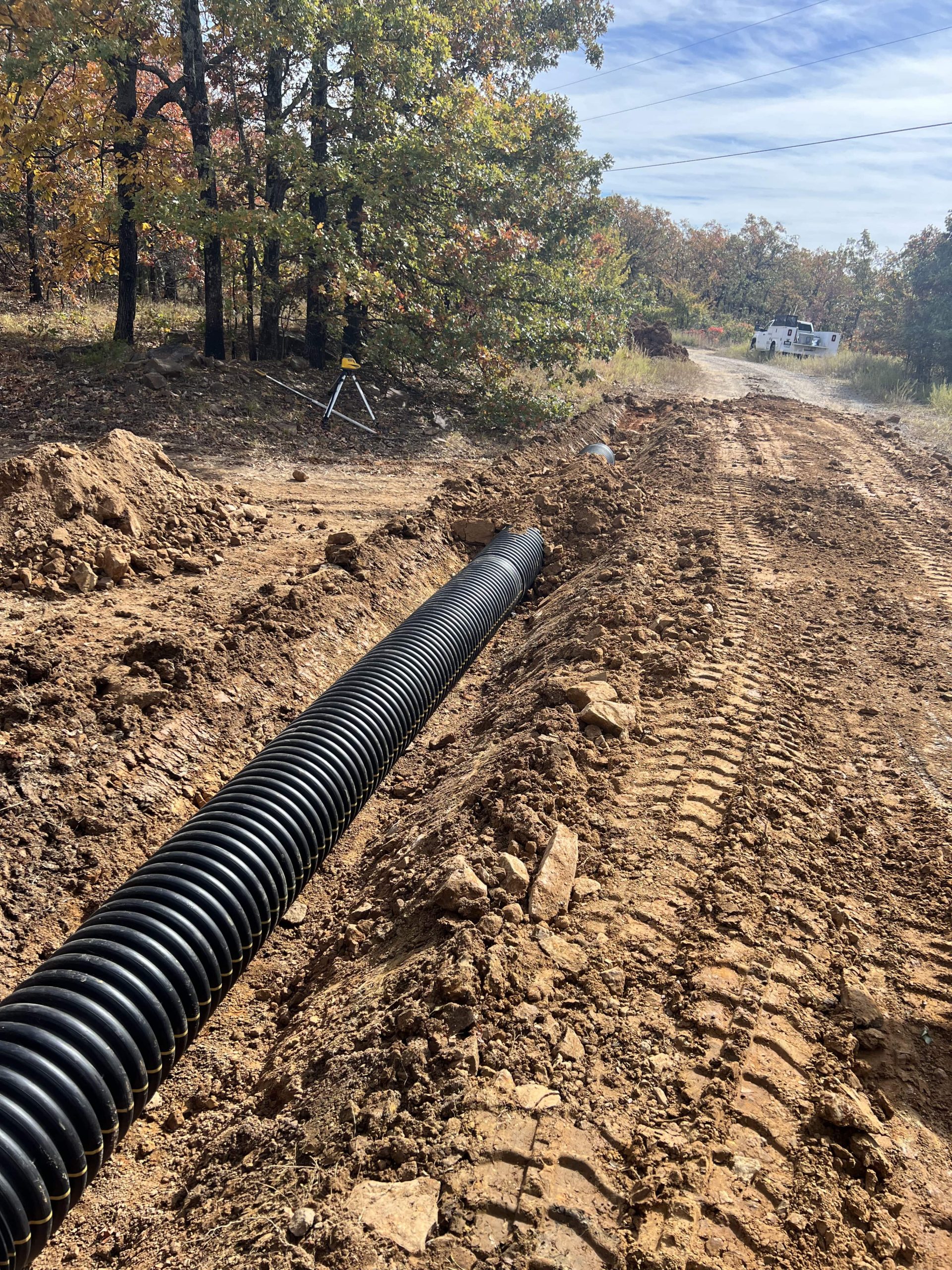Reliable Underbrush Clearing for Clean and Safe Land
Reliable Underbrush Clearing for Clean and Safe Land
Blog Article
Culvert Installment Made Easy: Step-by-Step Guide for Success
Installing culverts might appear like an uncomplicated job, however ensuring an effective outcome needs cautious planning and implementation. From selecting the ideal culvert dimension to integrating proper drainage procedures, each action in the setup process plays a crucial role in the performance and longevity of the culvert system. By adhering to a methodical method and paying focus to crucial details, the installment can proceed smoothly, decreasing potential issues down the line. Stay tuned to discover the vital actions and considerations that can make culvert installment a seamless and effective venture.
Picking the Right Culvert Size
Picking the suitable culvert dimension is important for making sure effective water flow and structural stability in culvert installment projects - Pad Construction. The dimension of the culvert straight impacts the circulation ability of water via the framework. A culvert that is too small can bring about flooding and overflow, while one that is also large might cause decreased water velocity, possibly triggering sediment buildup and obstructions
To identify the right culvert dimension, aspects such as the watershed area, peak circulation rates, and hydraulic efficiency demand to be meticulously considered. Computations based upon these criteria assist in selecting a size that can effectively manage the anticipated water volume while decreasing the danger of blockages and architectural failure.
It is necessary to seek advice from engineering standards and requirements to make sure that the picked culvert size satisfies the task needs and regional regulations (Pad Construction). By choosing the right culvert dimension, task managers can maximize water flow, protect against possible concerns, and boost the total efficiency and long life of the culvert installation
Preparing the Setup Site
Efficient culvert setup demands precise prep work of the installation site to make sure optimal architectural assistance and performance. Before commencing the installment procedure, it is essential to get rid of the website of any type of particles, greenery, or blockages that can impede the culvert's placement. Making sure a degree structure is important for the appropriate placement and security of the culvert. This may entail rating the site to produce a smooth, even surface that can adequately sustain the weight of the culvert and any type of anticipated tons. Furthermore, proper compaction of the dirt below the culvert is necessary to stop working out or shifting gradually.
In addition, it is essential to consider aspects such as soil structure, groundwater degrees, and ecological influences when preparing the setup site. Carrying out a complete site analysis can help determine any type of potential difficulties or dangers that may impact the culvert's efficiency. By putting in the time to prepare the installment site appropriately, you can Road construction assist assure a successful culvert setup that meets architectural needs and ensures lasting functionality.
Placing the Culvert Correctly

The grade at which the culvert is put is vital for keeping a correct incline for water flow. In addition, the culvert must be oriented appropriately to make sure that the inlet and outlet are in the correct places. Pad Construction.
Backfilling and Condensing the Soil
Appropriate backfilling and compaction of the dirt around the culvert is vital to ensure stability and protect against potential problems in the future. When the culvert is correctly put, the next critical step is to backfill the location around it with appropriate material. The backfill material must be complimentary from rocks, particles, and raw material to stay clear of damages to the culvert. It is recommended to utilize granular product such as sand or crushed rock for backfilling, as it offers great water drainage and compaction properties.
Compaction assists in decreasing the possibilities of settlement and makes sure consistent assistance around the culvert. It is essential to portable the dirt evenly on all sides of the culvert to maintain its architectural integrity.
Proper backfilling and compaction not just supply stability to the culvert yet likewise help in stopping soil erosion and maintaining the longevity of the culvert system.
Ensuring Proper Water Drainage Assimilation
Incorporating effective drainage services plays an important function in the general functionality and durability of culvert installations. Correct drainage assimilation is vital for managing water flow, protecting against disintegration, and making sure the structural integrity of the culvert system. To achieve this, it is essential to make a detailed drain plan that thinks about variables such as the quantity of water anticipated, the topography of the location, and the type of soil existing.

Furthermore, integrating functions like disintegration control procedures, such as riprap or plant life, can even more improve the efficiency of the drain system. By very carefully preparing and carrying out these water drainage options, culvert installments can function efficiently and stand up to the examination of time.
Conclusion
To conclude, proper culvert installation is important for keeping reliable drainage systems. By selecting the best culvert dimension, preparing the setup website, positioning the culvert appropriately, backfilling and condensing the dirt, and making certain appropriate drainage combination, success can be accomplished. Adhering to these actions will certainly help make sure the durability and efficiency of the culvert, ultimately adding to the total success of the water drainage system.
Report this page